 Life & Style
Life & Style

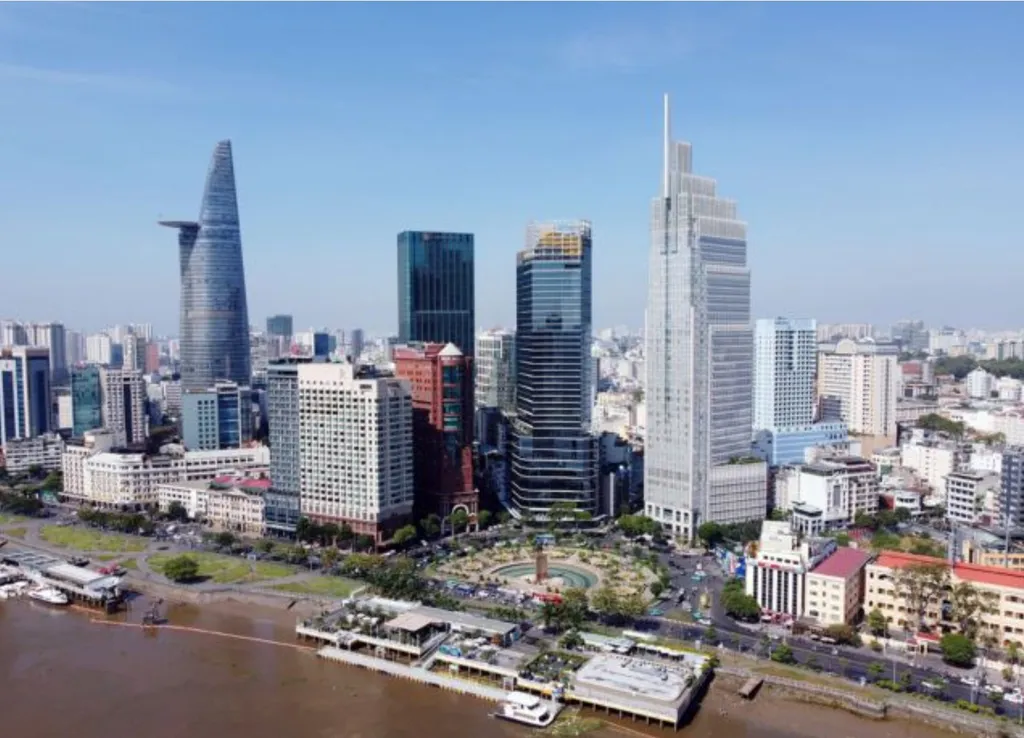 |
| A view of the HCM City skyline seen from Thủ Thiêm urban area in Thủ Đức City. HCM City is poised to become an international financial centre. — VNA/VNS Photo |
As Việt Nam prepares to mark a historic moment, the 50th anniversary of the liberation of the South and the national reunification on April 30,1975-2025, HCM City stands as a shining example of resilience, growth, and transformation since the end of the war.
The bustling southern metropolis, once marked by the scars of conflict, has blossomed into a vibrant economic hub, merging modernity with a rich tapestry of cultural heritage. Việt Nam News's reporter Bồ Xuân Hiệp reports.
The streets of Việt Nam’s largest economic hub, HCM City, once known as Sài Gòn, are alive with energy and vibrancy as the city gears up to celebrate the momentous anniversary. Red flags flutter in the breeze, and an electric sense of excitement fills the air.
As the anniversary approaches, every Vietnamese feels a profound sense of pride, reflecting on the rich history that has shaped their identity. For HCM City residents in particular, the occasion is truly special as 50 years ago, as the liberation army tanks overran the Independent Palace, now Reunification Palace, history was made, marking a turning point that completely changed the course of the nation.
“We want the world to know about our journey over the past five decades, how we’ve grown, thrived, and transformed,” Vũ Anh Khoa, a native of the city, told Việt Nam News.
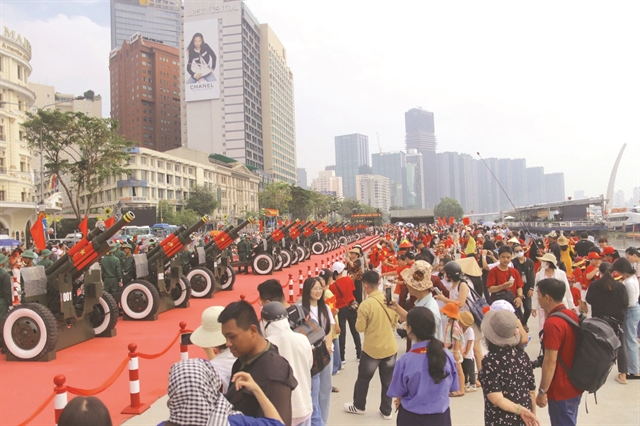 |
| Locals flock to Bạch Đằng Wharf in downtown HCM City to witness soldiers practising cannon fire in celebration of the 50th anniversary of the country’s reunification. — VNA/VNS Photo |
In preparation for the historic celebrations, the city will host various events, including exhibitions on the city’s history, cultural performances, and others. Highlights include the 37th HCM City Television Cycling Cup at noon and a fireworks display in the evening on April 30.
A national celebration and military-civilian parade will kick off at 6:30am along Lê Duẩn Street, featuring over 13,000 participants, and will be broadcast live. The ceremony will include a 30-minute art performance, flag-saluting, and speeches from leaders and representatives at the Reunification Palace in downtown HCM City.
This historic site is significant to the Vietnamese people, as it was here, on April 30, 1975, President Dương Văn Minh of the Republic of Việt Nam declared unconditional surrender to the force of the Việt Nam National Liberation Front, marking a crucial moment in the nation’s history. This event signified the fall of the US-backed Sài Gòn regime, the end of the Vietnam War, and the reunification of the country after two prolonged Indochina wars.
Today, the Reunification Palace stands as a testament to the resilience of the Vietnamese people and their remarkable transformation into a modern society over the past 50 years.
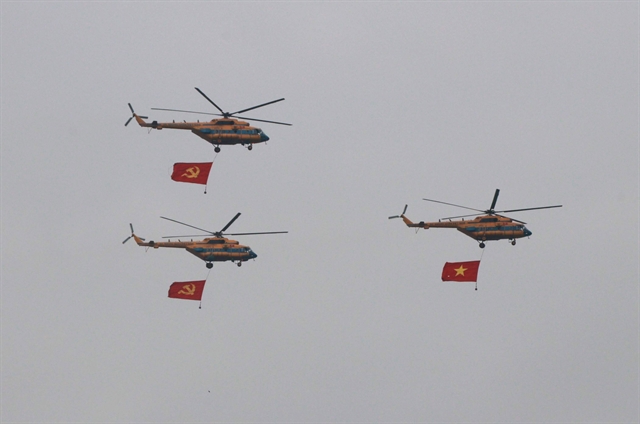 |
| Aircraft rehearse the celebratory flyover in the parade. — VNA/VNS Photo |
There will also be tributes to fallen soldiers at cemeteries, commemorations for late presidents Hồ Chí Minh and Tôn Đức Thắng on April 29, and programmes honouring war veterans and contributors to the 1975 Hồ Chí Military Campaign to liberate the South.
At a recent meeting with war veterans, former youth volunteers, and members of the militia who courageously fought in the 20-year anti-American war, General Secretary Tô Lâm of the Communist Party of Việt Nam said: "Generations of Vietnamese, both now and in the future, will always remember the incredible sacrifices made by those who shed their blood, lost their limbs and laid down their lives for national reunification and for the continual growth of our nation. These comrades are a true source of pride for our army and our nation.”
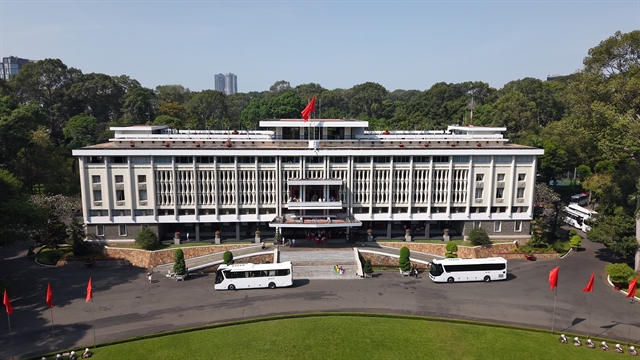 |
| The aerial view of the Reunification Palace. — VNA/VNS Photo |
Economic resurgence
Nguyễn Văn Nên, secretary of HCM City Party Committee, said from a historical perspective, the liberation of the South in 1975 was a pivotal moment for Việt Nam, bringing an end to decades of conflict and paving the way for national reconciliation.
Once reliant on agriculture and basic industries, the city has transformed into a vibrant hub for finance, technology and trade. Nowadays it contributes about 22 per cent of Việt Nam’s GDP and over 25 per cent of its industrial output, thanks to strategic reforms such as the Đổi Mới initiative in mid-1980s that welcomed foreign investment and private enterprises.
This led to remarkable double-digit growth from 1992 to 2011, and while growth has stabilised below 10 per cent since then, the city continues to outperform the national average, even after a setback during the COVID-19 pandemic.
To maintain momentum, the city has launched an ambitious action programme focused on science, technology, and digital innovation, aiming to allocate at least 3 per cent of its budget to these areas by 2030. The goal is to foster 5,000 start-ups and become Việt Nam’s leading digital technology hub, targeting a 50 per cent contribution from the digital economy to its GRDP by 2045.
Apart from that, the cultural landscape of HCM City is equally vibrant. The fusion of traditional Vietnamese culture with modern influences creates a unique urban identity. Festivals celebrating art, music, and cuisine draw locals and tourists alike, fostering a strong sense of community and pride.
Historic and cultural landmarks, such as the War Remnants Museum and the Reunification Palace, serve as powerful reminders of the past, while contemporary art galleries and theaters showcase the innovative spirit of the city’s youth.
 |
| A foreign tourist captures photographs of a helicopter at the War Remnants Museum, a must-see tourist attraction in HCM City, which serves as powerful reminders of the past.— VNS Photo Bồ Xuân Hiệp |
Transport infrastructure
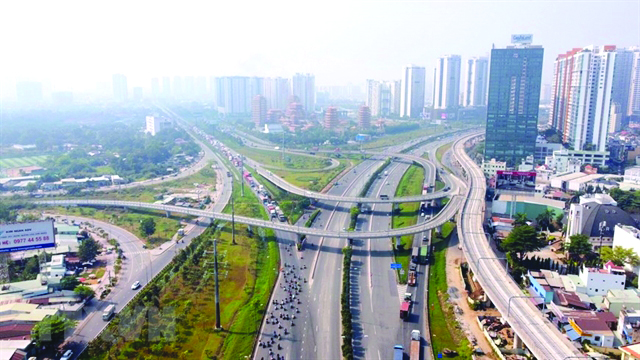 |
| The Cát Lái intersection overpass connects Hà Nội Highway and the Metro Line 1 in HCM City’s Thủ Đức City. The city has significantly transformed its transportation landscape over the past 50 years. — VNA/VNS Photo |
Since 1975, the city has grown into Việt Nam’s largest urban centre, significantly transforming its transport network. Modern metro lines and smart management systems now replace gridlocked streets, reflecting a commitment to sustainable urban mobility for over 10 million residents and visitors.
Roads have expanded from 1,000km in 1975 to over 4,500km today, with major routes such as Võ Văn Kiệt and Nguyễn Văn Linh easing congestion. Key developments include the Phú Mỹ and Thủ Thiêm bridges, improving access between District 1 and southern suburbs.
A landmark achievement is the city’s first metro line, linking Bến Thành Market in the heart of downtown to Suối Tiên Theme Park.
For many, including 80-year-old veteran Nguyễn Văn Đảm, the moment that the city, where he has lived for over 50 years, opened its first-ever metro line is particularly poignant as the city is celebrating the 50th anniversary of the liberation of the South and the national reunification.
“I’ve waited 17 years for this metro line to come to life, and after 12 long years of construction, it’s finally here. At my age, I never thought I’d witness such modern infrastructure in my lifetime,” he told Việt Nam News.
Officially launched last December, the metro line can carry up to 160,000 passengers daily, covering nearly 20km with a significant investment of over VNĐ43.7 trillion (US$1.72 billion).
The metro represents more than transport; it embodies modernity and urban renewal, with plans for a broader network exceeding 200km.
Other initiatives include trial electric buses and water buses linking downtown to Thanh Đa Peninsula and Thủ Đức City.
However, the city’s rapid growth hasn’t come without its challenges. Traffic congestion, pollution, and climate change are pressing issues that have prompted local authorities to prioritise sustainable development.
The authorities are implementing green urban planning, expanding public transport, and improving waste management to maintain livability for future generations. The city is also adopting green transport policies, including electric buses and plans for low-emission zones and bicycle-friendly infrastructure to reduce car dependency.
Upgrades extend to air and sea transport, with Tân Sơn Nhất international airport expanding to handle 40 million passengers annually and the new Long Thành International Airport under construction for future demand.
Cát Lái Port remains a major container hub, complemented by the upcoming Cần Giờ International Transhipment Port to enhance the city’s logistics capabilities.
Double-digit growth
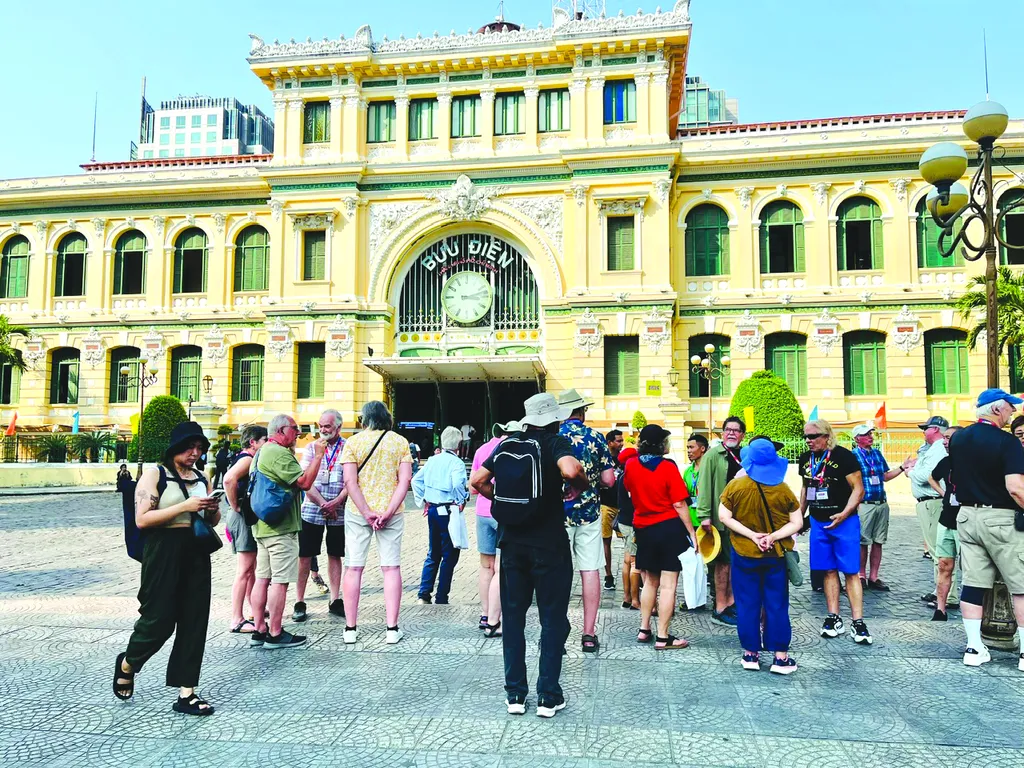 |
| SOUTHERN HOTSPOT: Foreign tourists visit the Saigon Central Post Office, one of the city’s iconic landmarks. The city generated over VNĐ56.6 trillion in revenue in the first quarter, welcoming 1.64 million international and 8.57 million domestic visitors. VNS Bồ Xuân Hiệp |
The city aims for double-digit growth this year, with a strong recovery evident as the city’s GRDP rose over 7.5 per cent year-on-year in the first quarter, the highest rate since 2020.
Lê Thị Huỳnh Mai, director of the city's Department of Finance, said the performance reflected the city’s efforts to rejuvenate the economy post-pandemic, attracting investment and boosting consumer confidence.
The services sector grew by 8.7 per cent, while industrial and construction sectors increased by 5.9 per cent. Total retail sales exceeded VNĐ316.6 trillion, a 14.2 per cent rise in consumer spending.
Goods exports reached $11.7 billion (up 5.6 per cent), and imports surged 15 per cent to $15.6 billion. The industrial production index rose 6.8 per cent, driven by growth in processing and manufacturing sectors.
Foreign direct investment reached over $567 million, up 23.4 per cent, despite challenges in new business registrations.
State budget revenue for the quarter was estimated at over VNĐ151 trillion, 29 per cent of the annual target.
For 2025, public investment capital is set at VNĐ67.4 trillion, with over VNĐ3.8 trillion disbursed by the end of March.
Nguyễn Khắc Hoàng, head of the HCM City Statistics Department, said that the city’s GRDP growth outpaced other leading regions such as Hà Nội, Cần Thơ, Bình Dương, Đồng Nai, and Bà Rịa - Vũng Tàu.
In addition, HCM City has also become an appealing tourist destination for both local and foreign visitors. The city generated over VNĐ56.6 trillion in revenue in the first quarter, welcoming 1.64 million international and 8.57 million domestic visitors.
International financial hub
With a strategic location, youthful workforce, and growing consumer market, the government plans to develop HCM City into an International Financial Centre (IFC) over the next five years.
The city has been ranked among emerging global financial centres. It has risen seven spots to 98th in the Global Financial Centres Index (GFCI), its highest ranking since debuting at 102nd in 2022.
The Politburo of the Việt Nam Communist Party approved the establishment of an IFC in the city by the end of 2024, alongside a regional centre in Đà Nẵng in Central Việt Nam.
The IFC will be located on a 9.2ha site in the Thủ Thiêm urban area, aiming to attract international investors and boost FDI inflows. A 29-member steering committee, led by Party Secretary Nguyễn Văn Nên, will oversee the project's development.
Nguyễn Văn Được, chairman of the HCM City People’s Committee [Administration], said that the IFC would be crucial for capital flow, innovation, high-tech development, and governance improvement.
The initiative would offer HCM City a chance to improve resource allocation, increase business capital access, and bolster Việt Nam’s global trade finance position, he added.
Party chief Lâm highlighted the city’s significant achievements over the past 50 years as a tribute to the sacrifices of the veterans, reminding all Vietnamese people that: “When you drink water, remember its source.”
"Việt Nam will always prioritise the well-being of veterans, ensuring they receive both material support and emotional care, so that no one is forgotten," Lâm said.
“Such brave individuals, whether in war or peace, are essential to our Party, our Government and our nation.” VNS

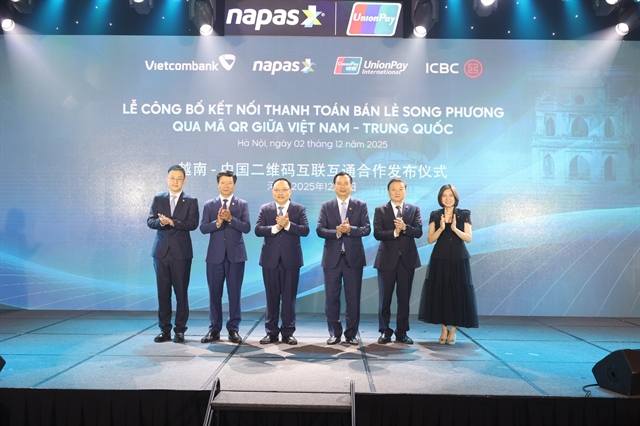
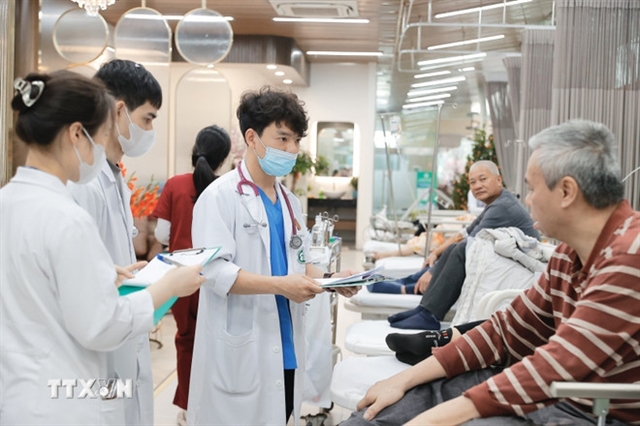
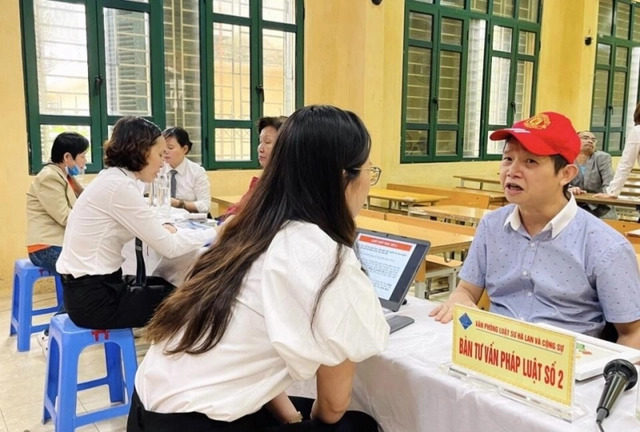
.jpg)